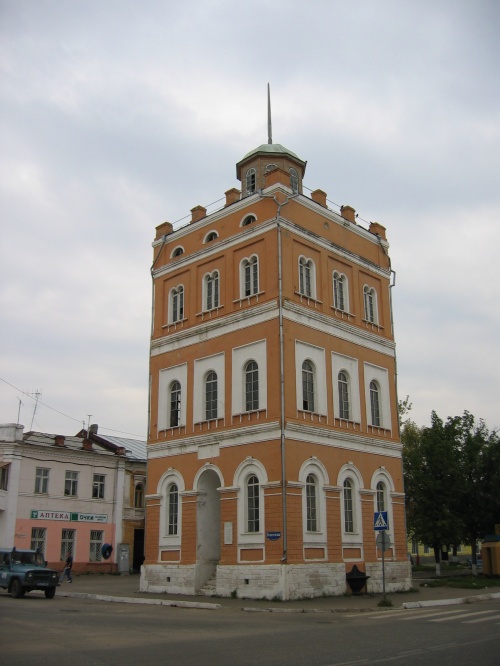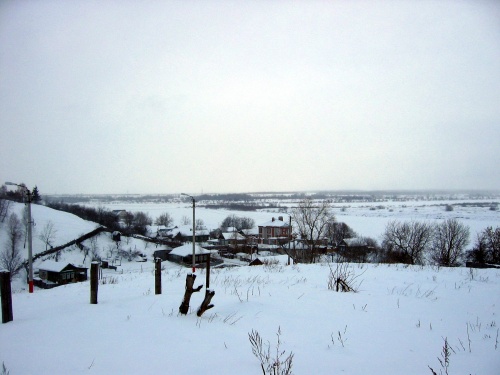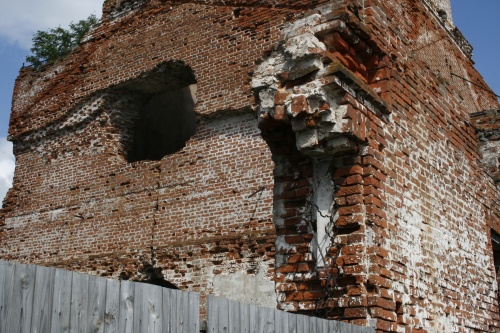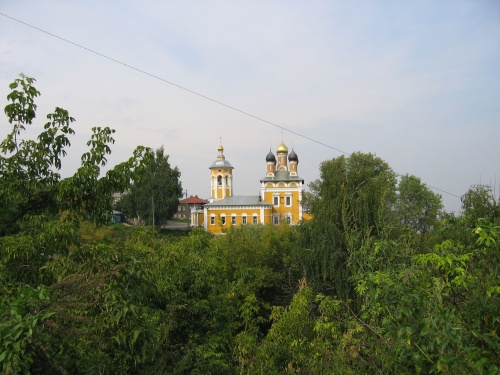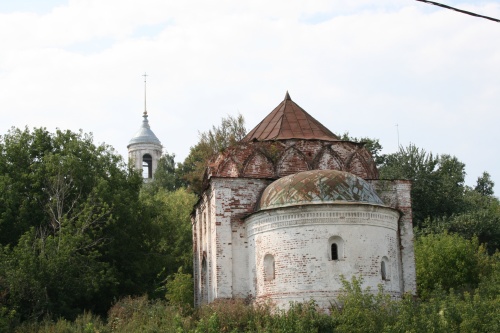Photo excursion - The city of Murom and its surroundings (43 photos) (part 1)
Story
The name of the city comes from the Finno-Ugric tribe Muroma, which was first mentioned in the Tale of Bygone Years in 862. Gleb Vladimirovich is considered the first appanage prince of Murom. In 1088 the city was captured by the Volga Bulgars.
Since 1097 it has been the capital of the Murom-Ryazan land. The Murom-Ryazan land became an independent principality from the Chernigov principality in 1127 under Prince Yaroslav Svyatoslavich. It is Prince Yaroslav and his family that historians and church tradition identify with those who baptized the Murom land with Saint Prince Constantine, Princess Irina, Prince Mikhail (son) killed by Murom pagans, and Prince Theodore (second son). In 1129, after the death of Prince Yaroslav Svyatoslavich, his son, Yuri (Theodore) Yaroslavich, sat on the Murom table and became the first Murom prince, and from 1143 to 1145 - the third son, Svyatoslav, and later his grandson, Rostislav. Under Prince Rostislav, the Murom-Ryazan land broke up into the Murom and Ryazan principalities, which finally separated after the death of Svyatoslav (1145).
The prince left his son Gleb in Ryazan. The Ryazan prince Gleb Rostislavich fought with all means against his northern neighbor, the Rostov-Suzdal principality. The result was the victory of Vsevolod the Big Nest (1208), who captured the local princes. Since 1219, Ingvar Igorevich reigned in Ryazan, and was succeeded by his brother Yuri. Under him, the principality was devastated by the hordes of Batu. Burned to the ground by the Mongol-Tatars, Murom disappeared from the pages of Russian chronicles in 1293. A new mention of him dates back only to 1351 and is associated with the last Murom prince, Yuri Yaroslavich, who was expelled from his throne in 1355 by Fyodor Glebovich. In 1392, the Grand Duke of Moscow Vasily I Dmitrievich annexed the Principality of Murom to Moscow.
In the middle of the 16th century, the troops of Ivan the Terrible gathered in Murom to participate in campaigns against Kazan. The construction of the first stone churches in the city dates back to this time. Since the 17th century, Murom has become an important craft center. Skilled leather tanners, shoemakers, blacksmiths, jewelers, tailors and other craftsmen work here. From that time on, the glory of the Murom kalachi began.
In 1708, Murom was part of the Moscow province, from 1778 - a district town of the Vladimir governorship (from 1796 - a province). The architectural appearance of the historical part of Murom took shape in the 19th – early 20th centuries, as large-scale fires in 1792 and 1805 destroyed almost all the old wooden buildings. The new city was built according to a master plan developed by Ivan Mikhailovich Lem and approved by Empress Catherine II back in December 1788. The plan provided for a transition from a radial-beam scheme of city development to a strictly perpendicular layout of streets. As a result, the blocks in the center of Murom are rectangles measuring 250 by 150 meters. In the 1980s, the established order was disrupted. According to the project of the city's chief architect N.A. Bespalov, many streets in the center of Murom were blocked off with multi-entrance houses.
The first water supply system in the Vladimir province was built in Murom. For this purpose, in 1863, a water tower was built at the intersection of Rozhdestvenskaya and Voznesenskaya streets (now the intersection of Lenin and Sovetskaya streets, respectively). Funds for the construction of the tower and the laying of pipes were given by the mayor of the city, Alexey Vasilyevich Ermakov, a wealthy merchant and philanthropist. In the 19th century, iron foundries and mechanical plants, flax spinning and cotton factories began operating in Murom, and railway workshops were built in 1916.
July 8-10, 1918 - White Guard uprising.
During Soviet times, many churches in the city were destroyed, several parish churches of the 16th-17th centuries were completely demolished. Among them was the Cathedral of the Nativity of the Virgin Mary, which dominated the urban development, built by order of Ivan the Terrible in the middle of the 16th century. On June 30, 1961, mass riots took place in the city, in which over 1.5 thousand workers of the Ordzhonikidze plant took part. Weapons were used, two workers were injured, and 12 were brought to justice.
On December 5, 2000, the mayor of Murom, Pyotr Kaurov, was shot in the head. The killer was never found. This crime shocked not only the city, but the entire region. Pyotr Kaurov headed the administration of Murom for nine years and enjoyed great respect from the residents. Now Murom school No. 8 is named after him.
Until 2010, Murom had the status of a historical settlement, but by Order of the Ministry of Culture of the Russian Federation of July 29, 2010 N 418/339, the city was deprived of this status.




